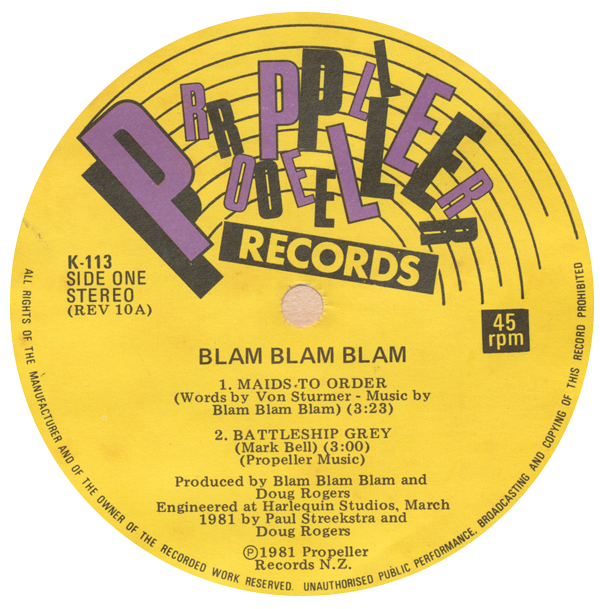
Edgy times demand edgy music, new voices and perspectives. And the new wave breaking hard on NZ’s pop charts in the early 1980s willingly provided it. For the first time in recent memory, pop music seemed vital, contested and plugged into fast unfolding international taste again.
Musical mavericks from the UK and New York were working their way into New Zealand’s pop charts (and often its venues) as early as 1979. The following year, the full fruit of the UK’s post-punk explosion came to bear on NZ’s popular musical consciousness as punk’s iconoclastic energy and imagination inhabited wave after wave of new music.
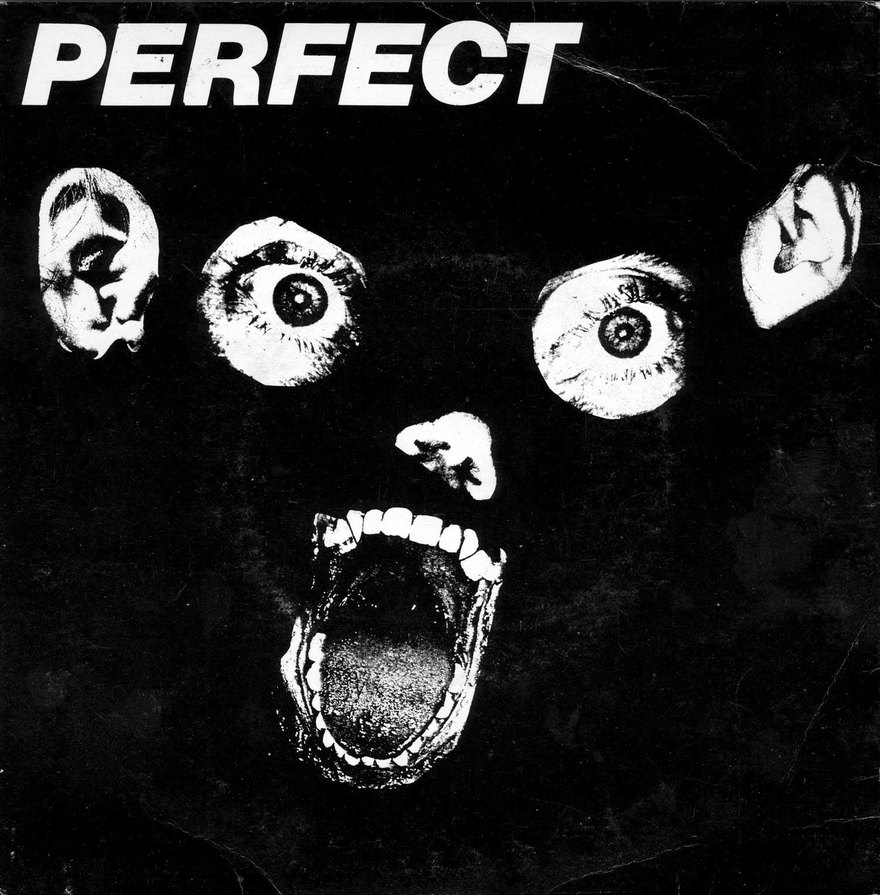
The Jed Town and Mike Brookfield designed sleeve for Propeller's first release, The Features Perfect EP, June 1980
The mod revival, ska, power pop, the beginnings of electronica, moody English avant rock, reggae and dub, amped up soul, rockabilly, white boy funk, the new psychedelia, synth pop, American and British hardcore punk, the Dada-like absurdities of Devo and Flying Lizards, heavy metal and hard rock, New Romantics and the Burundi beat (with its echo of glam) all helped stimulate and build a new audience for a new era.
Although the much-maligned music scene of the late 1960s and the early 1970s was, at least in the minds of critics and young fans, a caricature of bloated indulgence and exhausted ideas, it too would have a say. The dangerous and transgressive musical undertow of psych-folk, cracked blues, krautrock, Latin grooves, free jazz, outlaw country, reggae and dub, Bowie, Iggy Pop, and the still sparking remains of The Velvet Underground would be drawn on for inspiration in the post-punk era.
That’s why so many older musicians and scene participants (arguably more of the 1960s generation) found a niche and audience there.
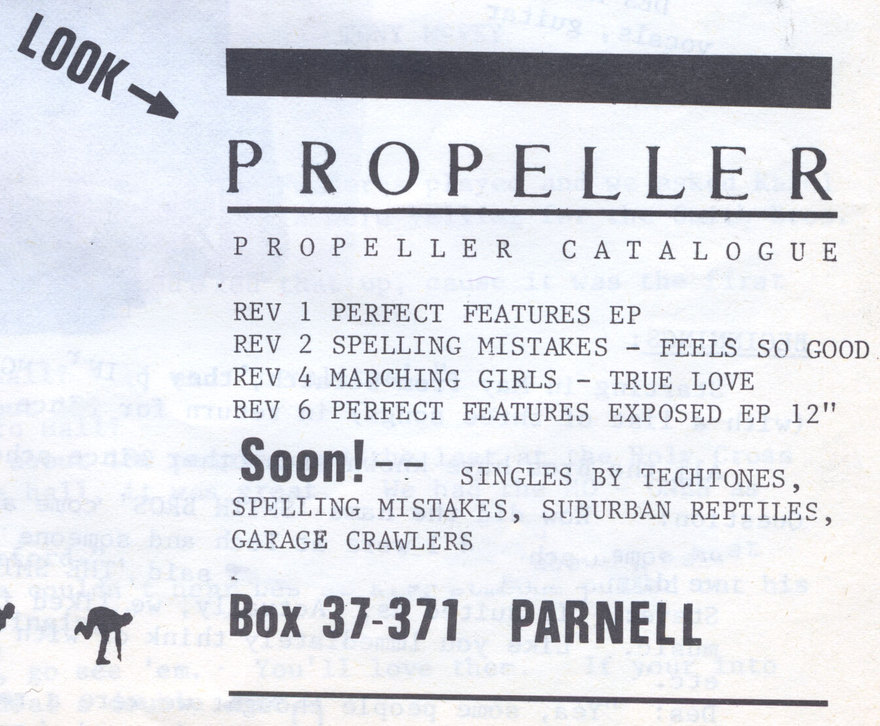
Propeller advert in an Auckland fanzine Empty Heads, November 1980
The same reductive lens meant the definition of post-punk music was itself quickly rendered down to indicate an exclusive, angular, fractured and often political sound, mostly born in the north of England and released on independent labels. It is more correctly a term referring to the reinterpretation, reinvigoration and reordering of existing musical forms, elites and methods of production in the wake of punk.
The NZ response
New Zealand could barely contain the outpouring of creative energy unleashed by punk. The possibilities introduced by this sea change were as rife as the stimuli were varied, and the mother lode of art and inspiration provoked a response of similar weight and (mis)proportion.
In 1980 and 1981, over 38 post-punk singles and EPs made the Top 50, the majority on small NZ indie labels. Not before or since have as many New Zealand groups been in the pop charts in a single year. That’s in addition to the smaller (but no less interesting) indie efforts that didn’t make the charts. Albums were still largely beyond small local label budgets.
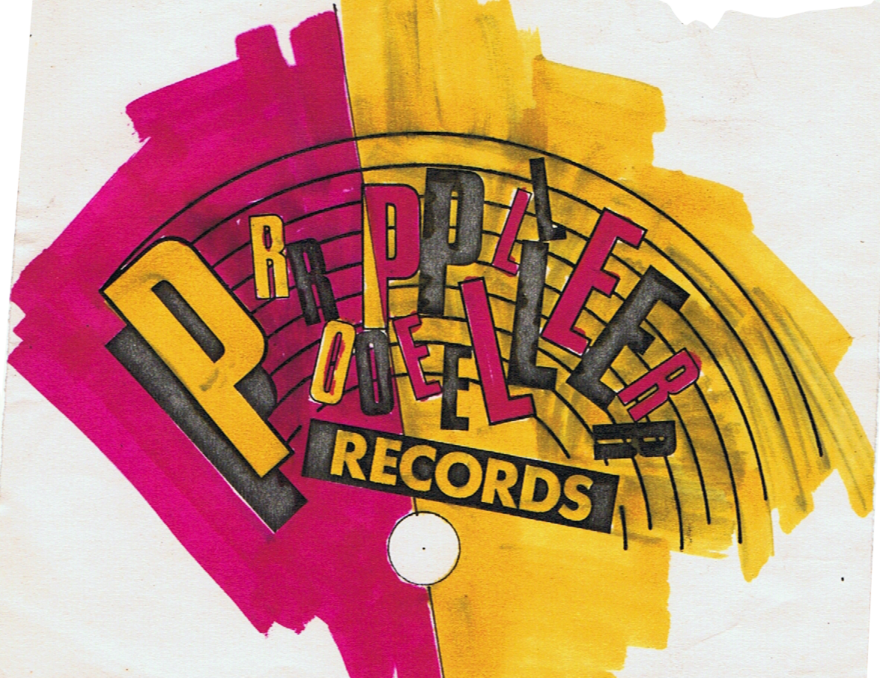
The 1980 Roger Jarrett hand-inked design for the first Propeller logo - Simon Grigg collection
This is the cultural climate with which Auckland indie Propeller Records engaged in Auckland and New Zealand from early 1980 to 1983. One of constant change and challenge. Simon Grigg was a first-generation Auckland punk. In 1977, he formed and then managed the Suburban Reptiles (until 1978). After a spell in record retail and six months in Sydney, he was back running the Taste Records store in Auckland’s High Street and flatting with James Pinker, the drummer of hot post-punkers The Features. Aware that they had a following and a strong flow of songs, he advised them to try and get a record deal. They did that and were turned down by every major label. Grigg then offered to form a label to release The Features, borrowing $400 from his flatmate (and Pinker’s girlfriend) Nancy Tidball.
With one band in hand, he was then offered another. The Spelling Mistakes were managed by Larry Young, Grigg’s brother-in-law and also the booker of The Windsor Castle in Parnell. The two concocted a (successful) plan for the band to take the first prize in The Windsor Castle’s Battle of the Bands – a day’s recording at Mascot Studios – and Propeller found itself with two bands.
Over the next few months, drawing initially on the remnants of Auckland’s punk generation – The Features, The Marching Girls, The Spelling Mistakes and The Techtones – Propeller took the adventurous end of the post-punk sound (‘City Scenes’) and highly infectious pop-punk/power pop (‘First In Line’, ‘Feel So Good’ and ‘That Girl’) into the charts and local record collections in 1980. The Features’ ‘City Scenes’ and The Spelling Mistakes’ ‘Feel So Good’ each sold in excess of 1,000 copies on release.
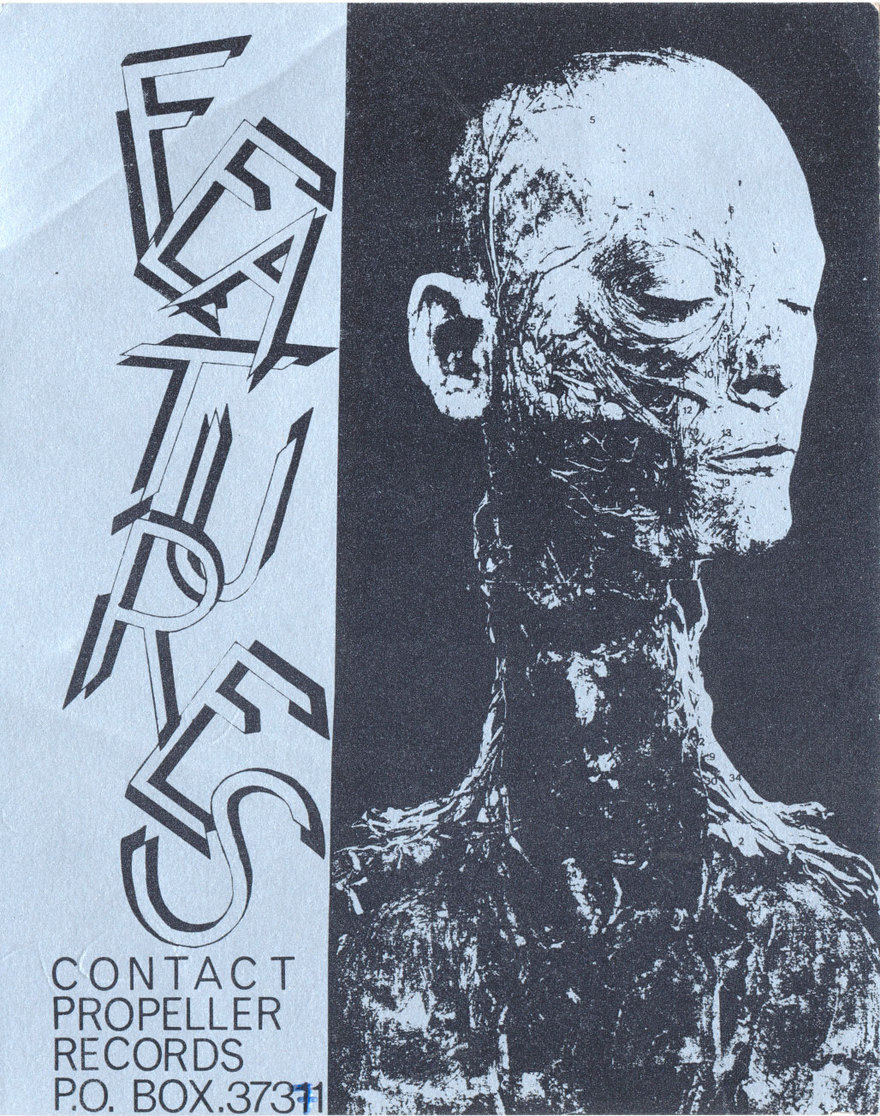
Propeller Records/Features business card, 1980 - Design: Jed Town, Type: James Pinker
When The Features returned at year’s end with the 12-inch EP Perfect Featured Exposed (anchored by jarring dissonant masterstroke, ‘Victim’), the benchmark for the NZ post-punk era was set. Art, energy and adventure were the new norms. Indie labels were the new medium.
By year’s end, Auckland had a robust live circuit hosting the new wave of post-punk groups. All ages venue XS Café opened in May 1980 (and closed in April 1981). The Rumba Bar in Victoria Street east opened in September 1980. The Reverb Room in Symonds Street opened in October 1980 in the old Liberty Stage. Mainstreet Cabaret was also warming to the new sounds and would be another vital showcase for the new groups that Propeller Records would release. That’s in addition to the many lesser-lived venues of the time. Important live rooms in provincial cities were also opening to fresh sounds.
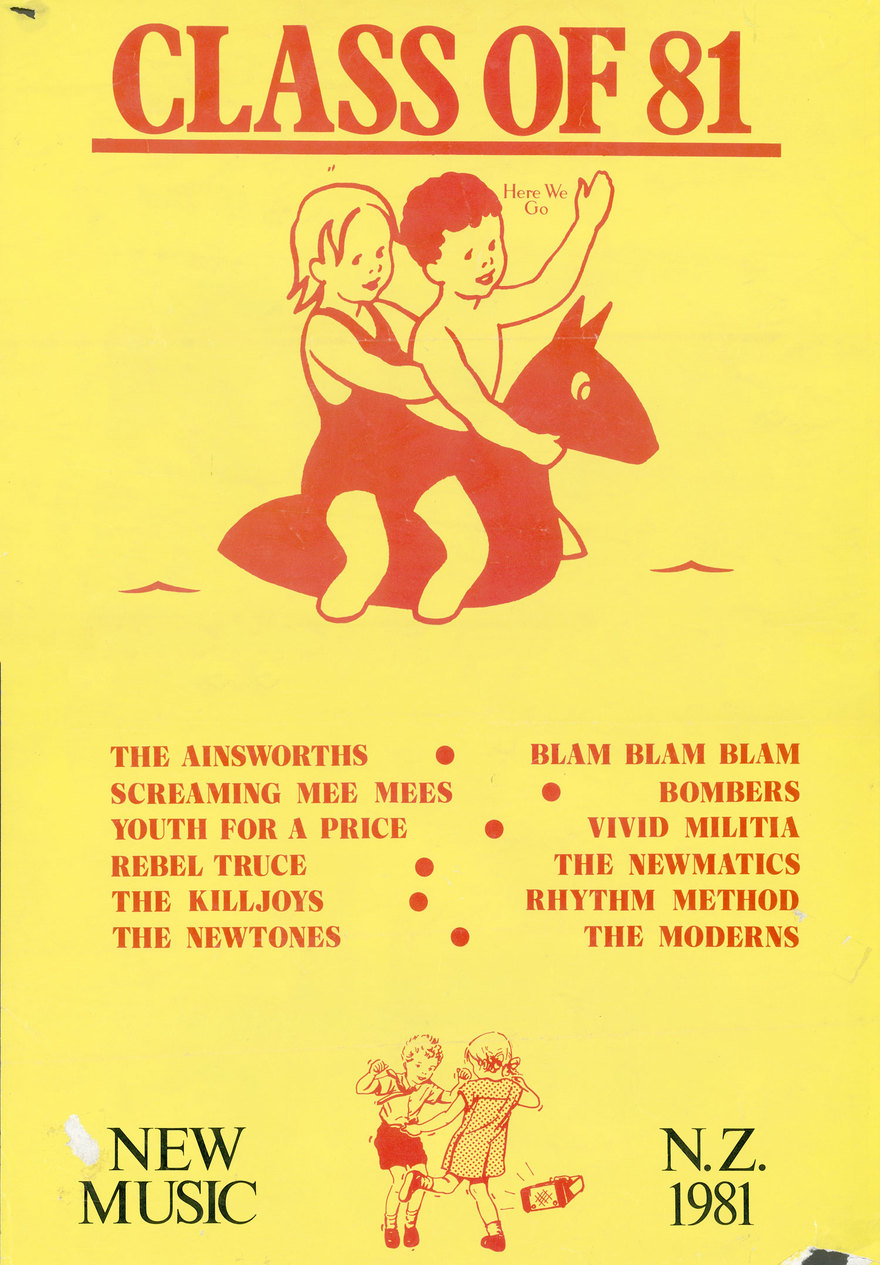
Poster for the March 1981 Class Of 81 compilation of new bands, based on the album cover designed by Terence Hogan
Class of 81
Gathering up the early recordings of Auckland’s best new groups (and Christchurch’s The Newtones) in late 1980, Grigg released the Class of ’81 compilation in March 1981. With Propeller now distributed by Festival Records after early days with indie Ode Records, it would prove a landmark release.
In its grooves lay the label’s future. From the crop of mod-revival inspired bands (The Jam were a popular group in NZ and the movie adaptation of The Who's Quadrophenia played in cinemas from June 1980), he drew The Ainsworths, The Regulators, The Moderns and The Screaming Meemees.
With a shared single (with The Newmatics) already available on Auckland’s other new indie, Ripper Records, and a performing history dating to late 1979, The Screaming Meemees were one of the first of the new North Shore groups to make a noise in the Queen city. Their Class of ’81 contribution ‘All Dressed Up’ was a sharp piece of strutting 1960s pop with words that celebrated street fashion and restless urban nights.
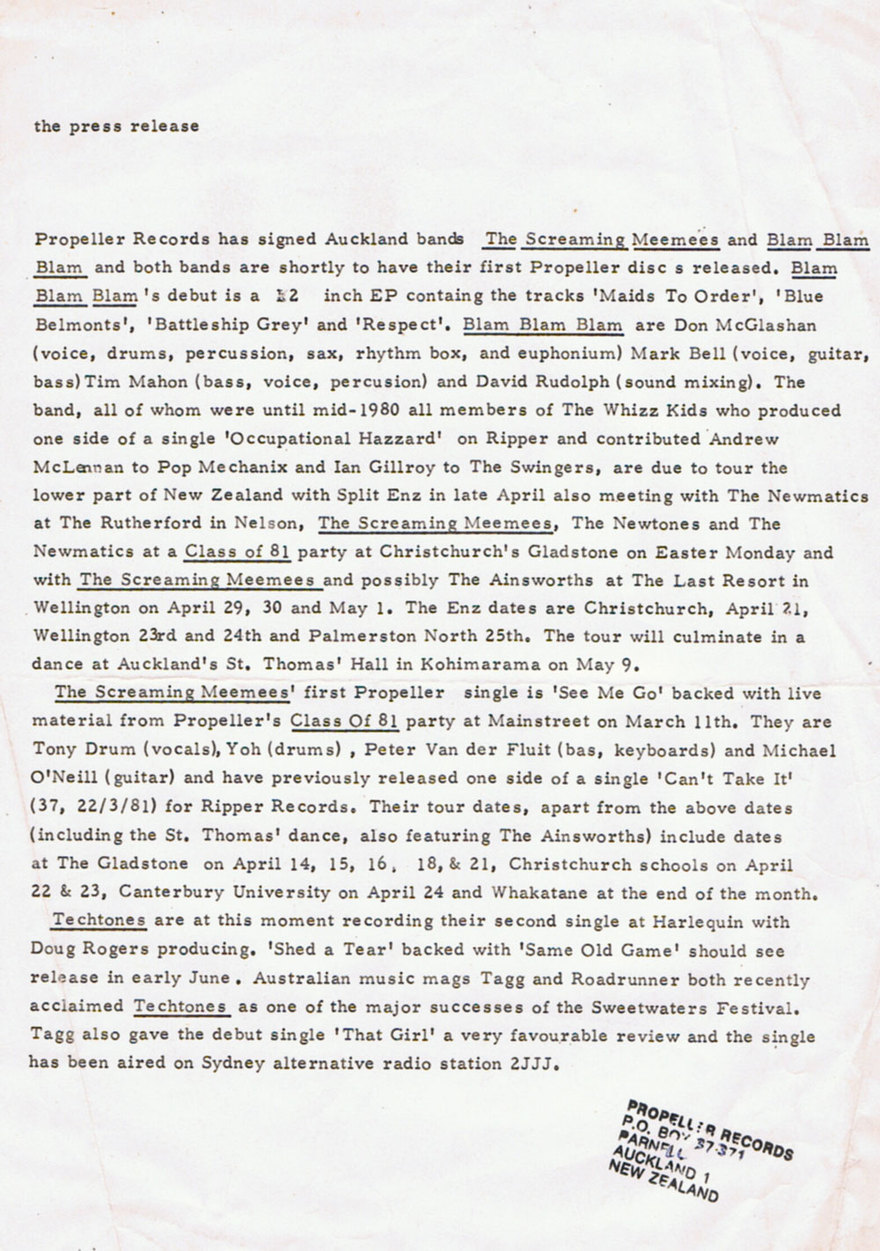
Propeller press release, April 1981. The Screaming Meemees single would not see release until July and the second Techtones single remains unreleased.
In April 1981 Grigg took over as manager of The Screaming Meemees and took on Newmatics’ manager Paul Rose as a partner in the label, to help administer the growing label-related activity that would include the groundbreaking Screaming Blam-matic Roadshow, which would establish the label as a national force.
The Screaming Meemees next shot was the irresistible, head down ‘See Me Go’ with the stomping, anthemic ‘Till I Die’ on the B-side, which retooled Catholic hymns with ringing guitar and strident beats, and hit the top of the charts in August 1981. ‘See Me Go’ sold 4,000 copies in one week and was then deleted.
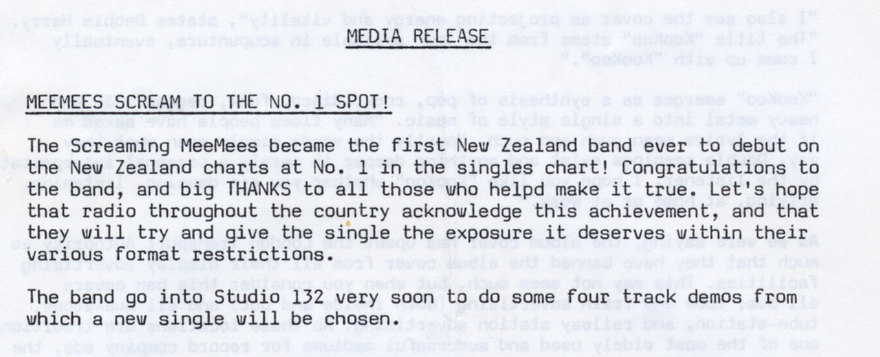
August 1981 Festival Records press release celebrating The Screaming Meemees No.1 debut - a NZ first - Simon Grigg collection
Third single ‘Sunday Boys’ was even better, revealing a neat Kinks-ish lyrical eye – “See them, see them in the Strand, at least the places they used to stand” – and an infectious 1960s strum and chorus. Flip it over and you got the wild and tribal ‘At At’ which hinted at the Meemees powerful live attack. ‘Sunday Boys’ climbed to No.11 in the pop charts in December 1981. That made three hit singles in one year, all in neat modern picture sleeves. Finger, meet pulse.
Class of ‘81’s art rock (post-punk) contingent – Youth For A Price, Rebel Truce, The Bombers and Blam Blam Blam – presented another strand of new intent. Quirky one offs aside, it was the Blams who endured. Their self-titled EP Blam Blam Blam confronted the stultifying norm and introduced the trio to the pop charts in May 1981, where it consolidated a new template for post-punk releases – the 12-inch EP in unique picture sleeve. The Features' second record had been released in this format in late 1980 and The Screaming Meemees’ upcoming ‘See Me Go’ also appeared as a limited run 12-inch EP.
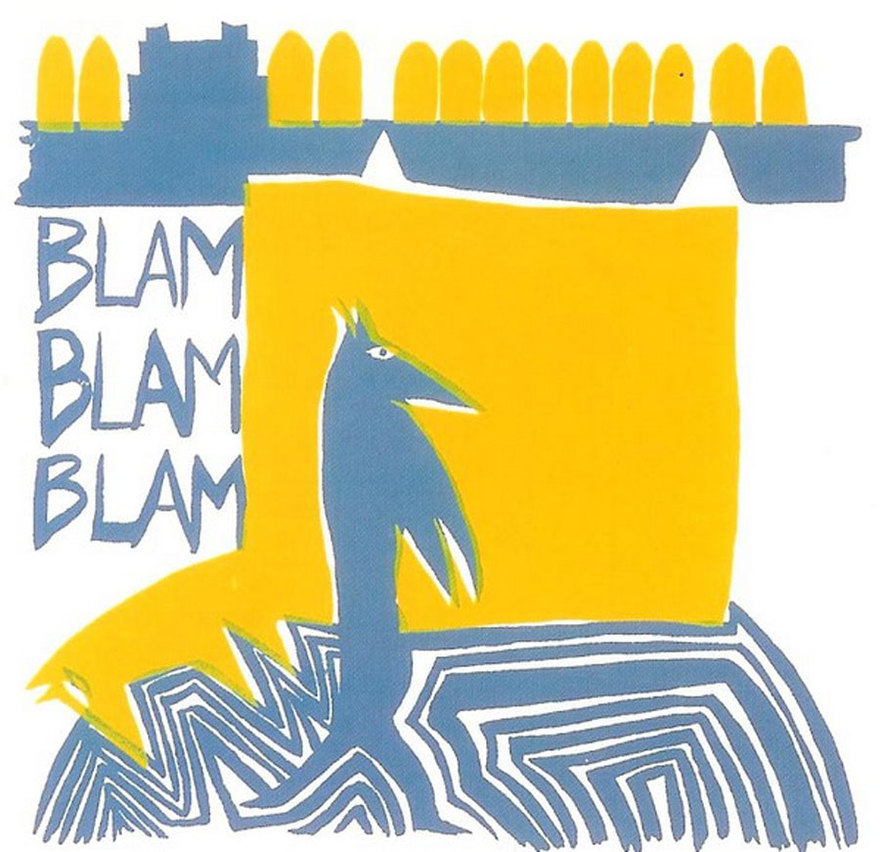
The debut Blam Blam Blam EP. It was released in March 1981 and then reissued in early 1982 with the There Is No Depression In NZ single added.
Blam Blam Blam’s eerie channelling of the wider times, ‘There Is No Depression in New Zealand’, captured in July 1981, made the Top 20 in August. The follow-up, ‘Don’t Fight It Marsha, It's Bigger Than Both Of Us’, made No.17 in December. Three more hit records in one year, all in modern picture sleeves.
The third gem in Propeller’s pocket was The Newmatics. ‘Five Miseries’, their Class of ’81 track, referenced reggae, but it was just one ingredient in a popular, danceable mix. The Newmatics duly signed to Propeller’s associate label, Furtive Records, who released their Top 20 hit, Broadcast O.R. on a double 7-inch single in October 1981. The label would also release the debut 12-inch single by Tall Dwarfs, charting it in August 1981 as the first of the TEAC 4-track recordings that would later define early Flying Nun.
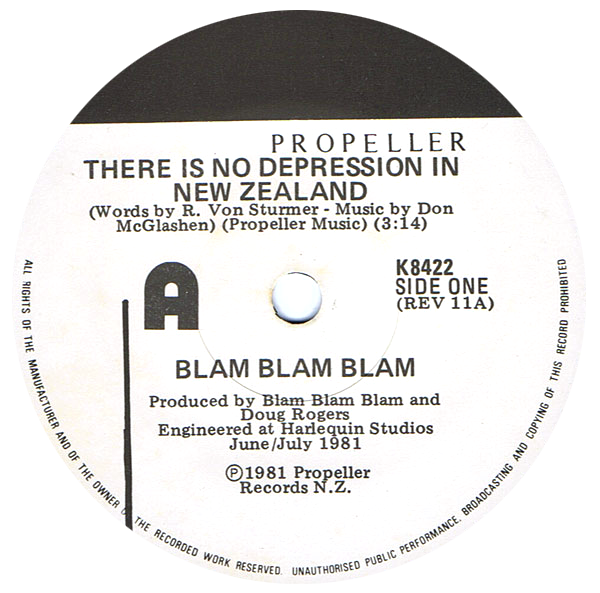
Other Class of ’81 groups in this vein were The Moderns and Rhythm Method, whose giddy ‘Carousel’ was another LP highpoint. As The Bongos, the core of Rhythm Method released the spiralling ‘Falling’/‘Monotony’ on Propeller Records in November 1982.
There were also one-offs like Garage Crawlers’ ‘Only You Tonight’, backed with the parallel grooved ‘V8 Song’ and ‘Normal Dunediner’ that fooled some reviewers into thinking they’d been short changed.
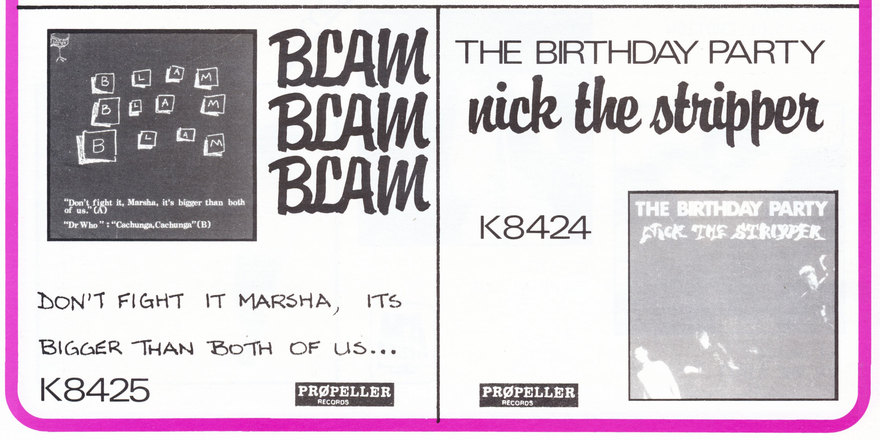
Festival Records sales sheet, November 1981. The Birthday Party single, with a NZ exclusive non-LP B-side, was exported in some numbers to the UK.
In October 1981, Propeller picked up the debut from Melbourne’s The Birthday Party, Prayers On Fire. They followed it up with the even more challenging Junkyard in November 1982. Neither album sold well, although The Birthday Party single 'Nick The Stripper', with an unique song on it, exported in the thousands.
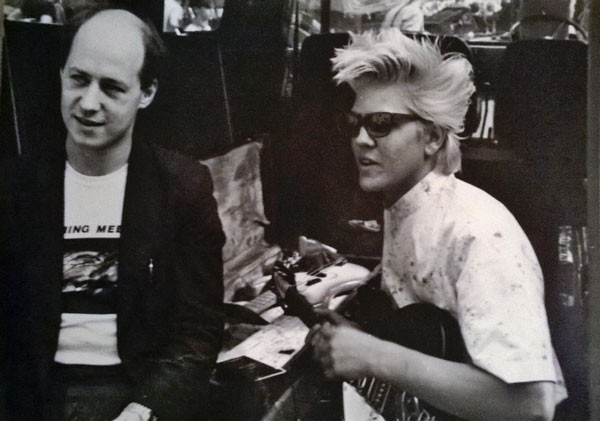
Simon Grigg and The Screaming Meemees' Mike O'Neill at Devonport Domain, 1982. - Photo by Jim Abbott
New groups like The Dabs (with The Ainsworths’ Rowan Shedden) formed in Auckland in 1981 and were picked up for release by Propeller Records in 1982. A popular live draw, The Dabs had a strong 1960s style and a brace of memorable originals, including ‘Love The Army’ and ‘Remember When’, which featured on their Top 40, September 1982 EP, Love The Army.
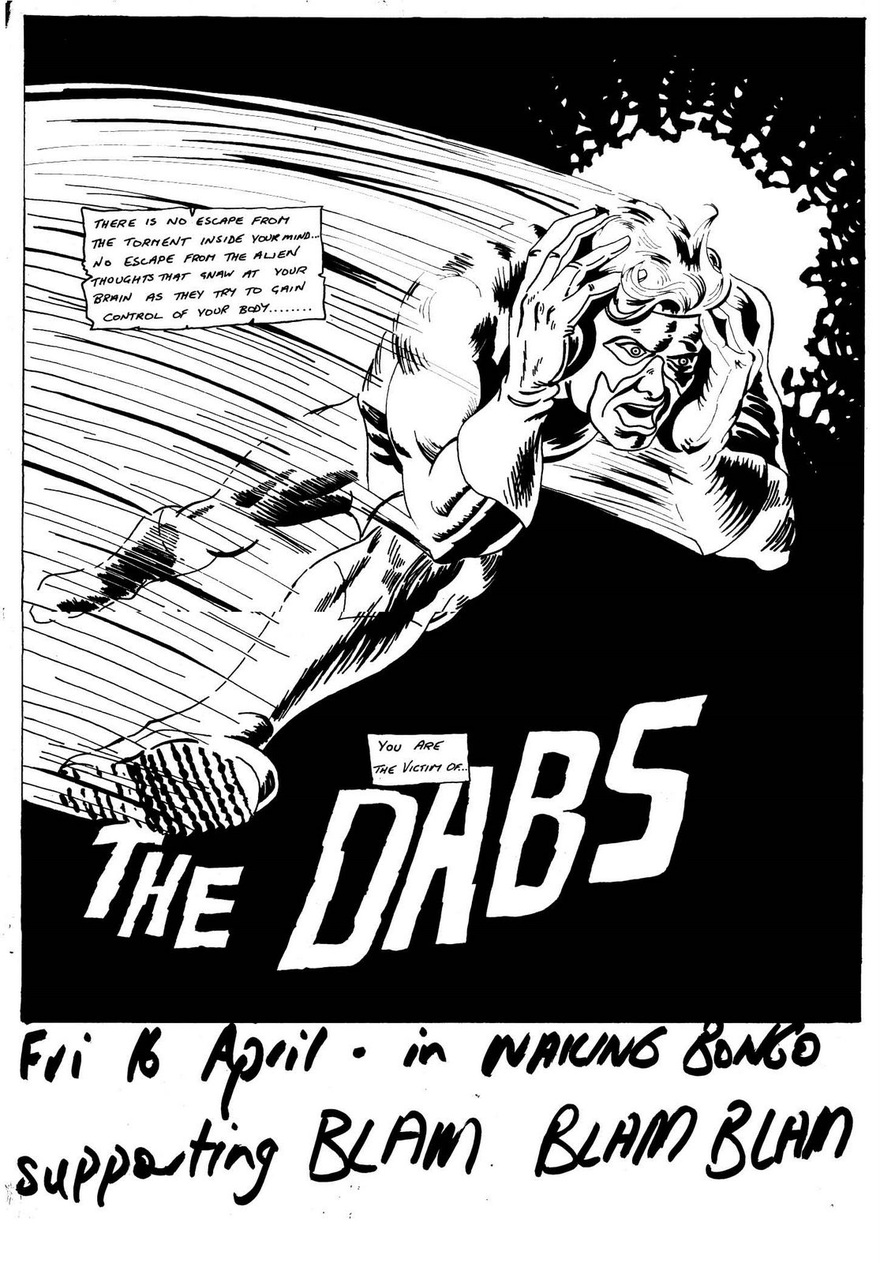
The Dabs supporting Blam Blam Blam, April 1982 - Simon Grigg collection
Stepping out
In late 1981 and through 1982, The Screaming Meemees and Blam Blam Blam could be seen and heard on the pulsing Auckland and the New Zealand live circuit, cementing their national following.
Their records were just as restless in gathering up the new ideas flowing through the charts. Blam Blam Blam’s ‘Call For Help’ skimmed the charts in June 1982 before spinning off into the stratosphere. The Screaming Meemees' non-charting fourth single ‘F Is For Fear’ from July 1982 is a timeless dance floor classic with horn section, bass breakdown and boy/girl vocals from Tony Drumm and The Gurlz’s Kim Willoughby.
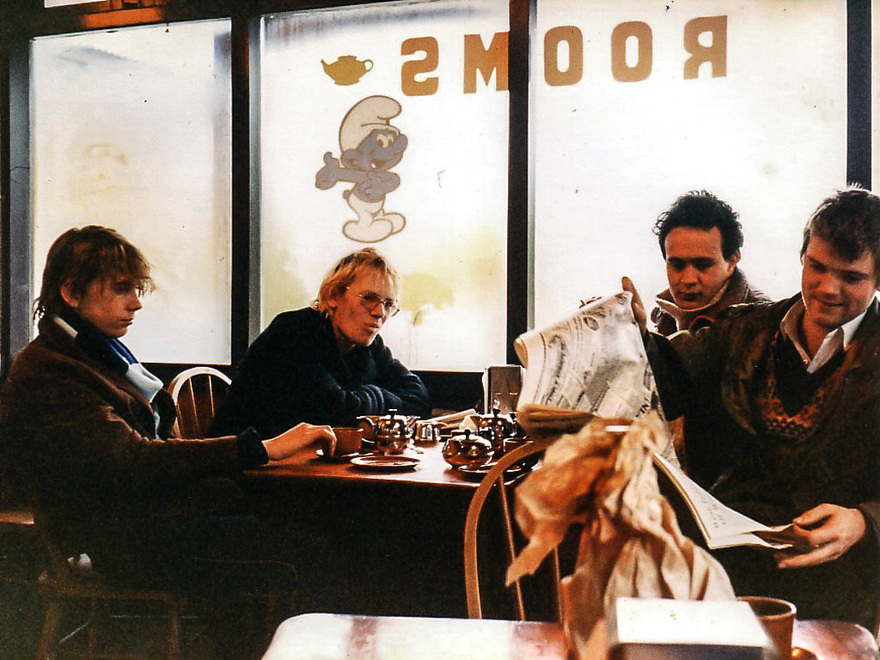
Screaming Blam-matics on tour - Peter van der Fluit & Yoh (Screaming Meemees) and David Rudolph & Tim Mahon (Blam Blam Blam) - Photo by Jenny Pullar
Both songs were plucked from adventurous debut hit albums – Blam Blam Blam’s Luxury Length in June 1982 and The Screaming Meemees’ If This Is Paradise, I’ll Take The Bag in July 1982.
The Screaming Meemees album was released through Festival in Australia in late 1982 and an extended Blam Blam Blam EP (adding ‘There Is No Depression In New Zealand’ and ‘Got To Be Guilty’) was made available there and in NZ in March 1982.
Drawing on another rising subculture – punk rock’s revival in the UK – No Tag unleashed the powerful Oi Oi Oi EP, another Top 20 hit for Propeller in September. No Tag’s only album Can We Get Away With It?, recorded live in Auckland’s Reverb Room, just grazed the charts in April 1983.
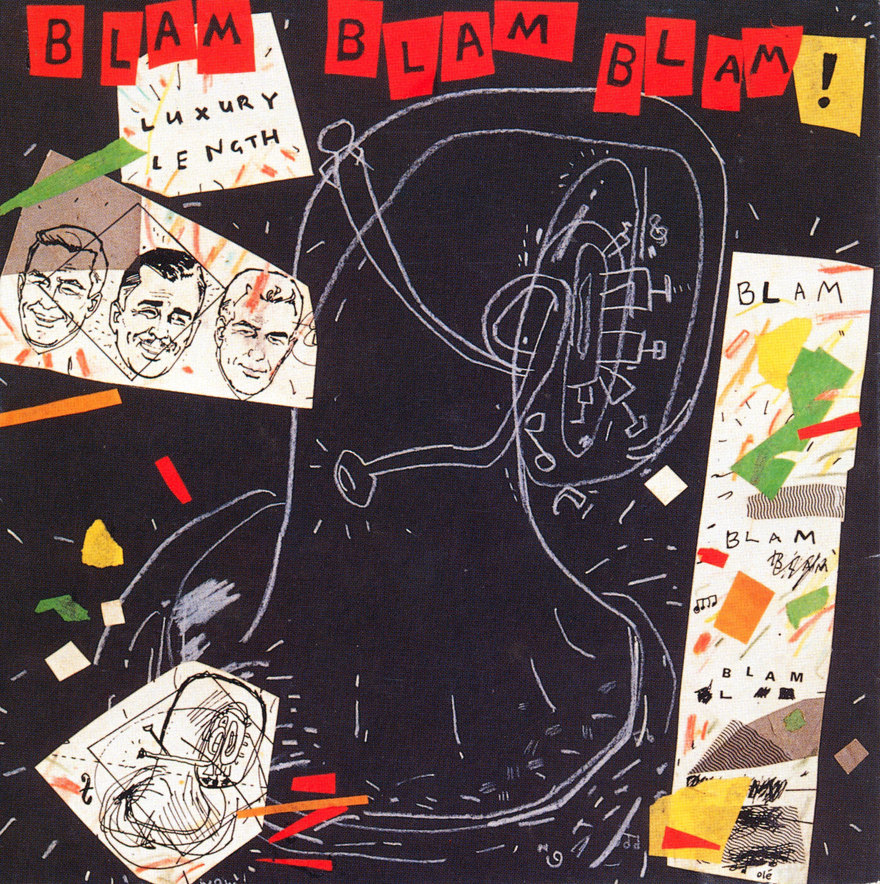
The John Reynolds-designed sleeve for the 1982 Blam Blam Blam album Luxury Length. The original artwork was sadly stolen from the Festival Records office and remains lost.
Label retrospective Doobie Do Disc appeared in November, bringing Propeller’s early releases and two unreleased songs from The Features into the light again. An EP under the same name, but with an altered track listing was compiled and released in Australia by Festival Records.
The Auckland indie label saw out their third year with Don McGlashan and Ivan Zagni’s avant garde Standards EP, which sold well. To cap it off, Simon Grigg won a special award for commitment to the recording and promotion of local artists at 1982’s recording industry awards.
We’ll Do Our Best
With The Screaming Meemees and The Dabs popular draws on the national live circuit, Propeller groups didn’t lack for work or profile in 1983. But it seemed some of the hunger for the new sounds was abating. Early week live shows – a feature of the new wave revival in Christchurch and Auckland – were gone by October 1982, with key venues closing down in 1983. The Reverb Room closed in February and The Rumba Bar in July.
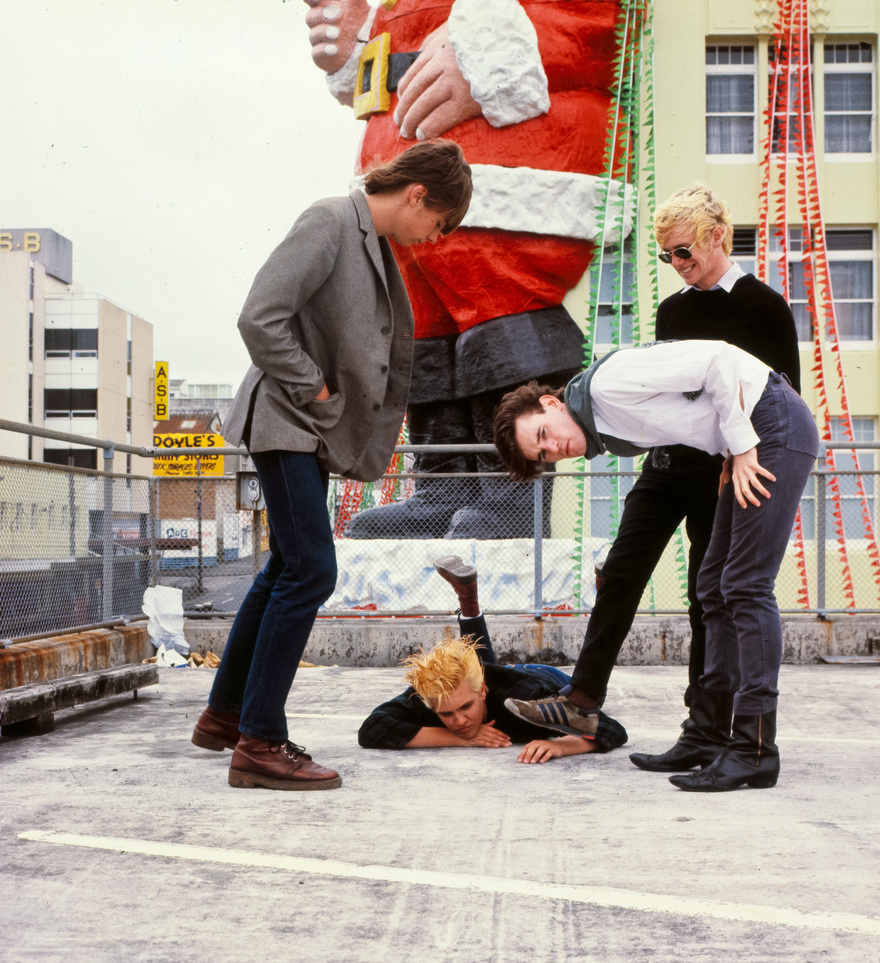
The Screaming Meemees on the roof of Farmer's carpack, in an outtake from the 1981 RipItUp Xmas cover shoot - Photo by Murray Cammick
It didn’t stop the new releases coming. Miltown Stowaways’ Hired Togs 12-inch EP, which brought together members of Blue Asthmatics, Pleasure Boys and The Newmatics, appeared in January 1983. Propeller Records and New Zealand’s first extended remix, The Screaming Meemees’ big selling soul-funk blast ‘Stars In My Eyes’ backed with ‘Day Goes By’, climbed into the Top 20 in February. In marked contrast, Export Lamb’s ‘Someone To Blame’ sold only 43 copies in March 1983.
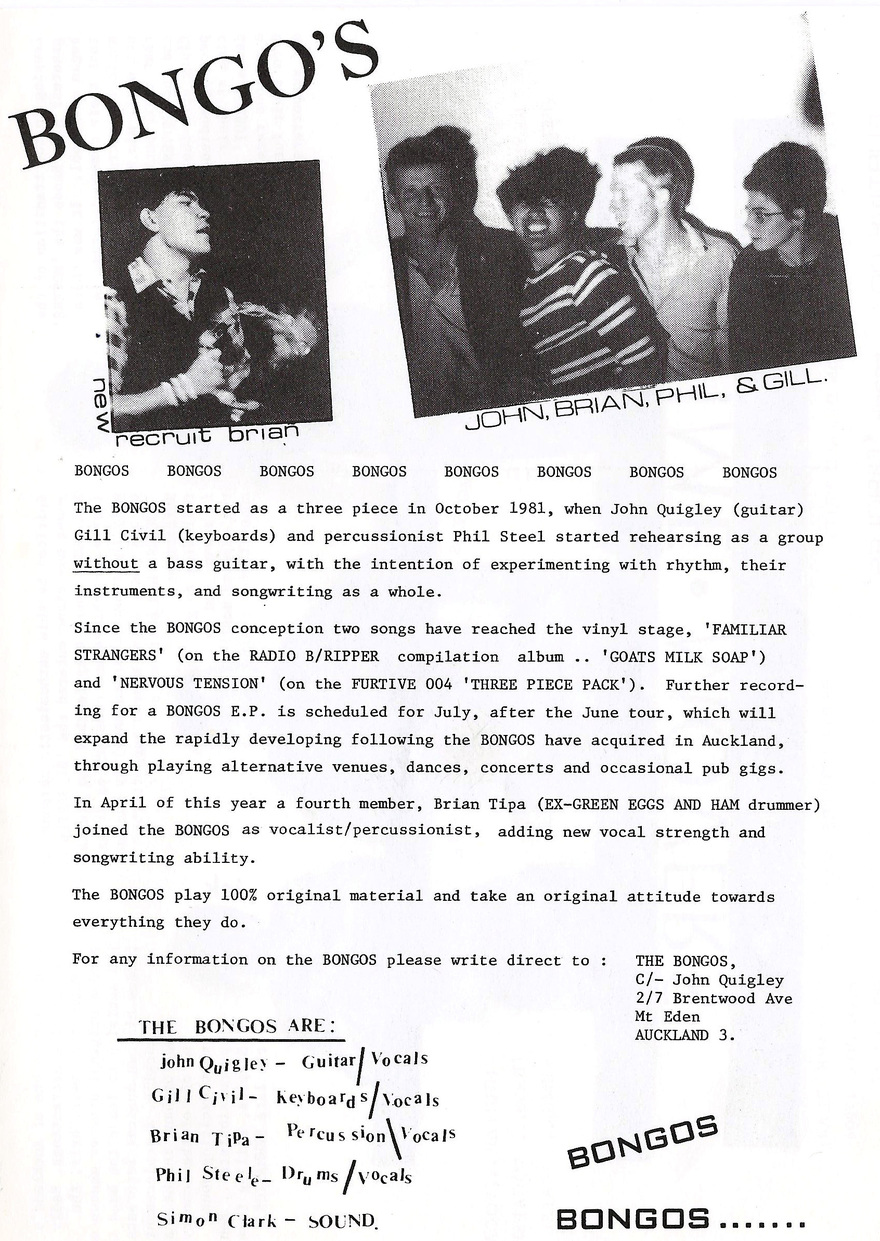
The Bongos first press release, 1982 - Simon Grigg collection
When Propeller’s second new artist compilation We’ll Do Our Best emerged in March, it showcased a scene with plenty of juice and drive and innovation left in it. Dub and reggae had been important Auckland sounds since the 1970s, and the innovation of dub and relaxed reggae rhythms coupled with political lyrics were well represented by Diatribe, Double Man and Compulsory Allies.
The new teen and post-teen pop heralded by The Screaming Meemees got a nod with The Wastrels’ poignant ‘Angels in Silence’. But it was the new electronic pop and dance sounds of Car Crash Set, Terror of Tinytown and Ballare that held the most promise. Some of which would be fulfilled, but on other labels.
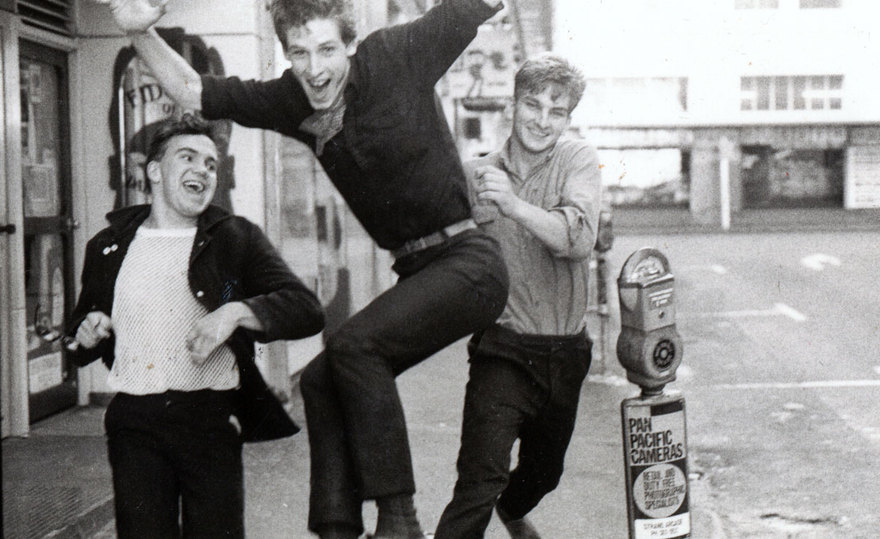
The Prime Movers - Benny Staples, Nick Crowther, Kevin Howlett - Photo by Murray Cammick
The cost of The Screaming Meemees and Blam Blam Blam LPs hadn’t been cleared by sales and despite the community rallying with benefit shows in August 1983, Propeller’s days were numbered. Having bought out partner Paul Rose and selling a small share to Marcus Wells (to administer the label), Simon Grigg joined the post-punk diaspora to Australia and England, and the label quickly faded from view. Promised live and studio discs from The Newmatics and a live Meemees EP didn’t appear and other projects were picked up elsewhere.
Reprise and reflection
Simon Grigg reactivated Propeller Records on returning to New Zealand in 1985 for Sistermatic’s ‘Million Dollar’. The new group, which featured the rump of The Newmatics and vocalist Sina Siapia, hit stormy water immediately over the song’s lyrics, which mentioned a current legal scandal. ‘Million Dollar’ was quickly pulled by its distributor.
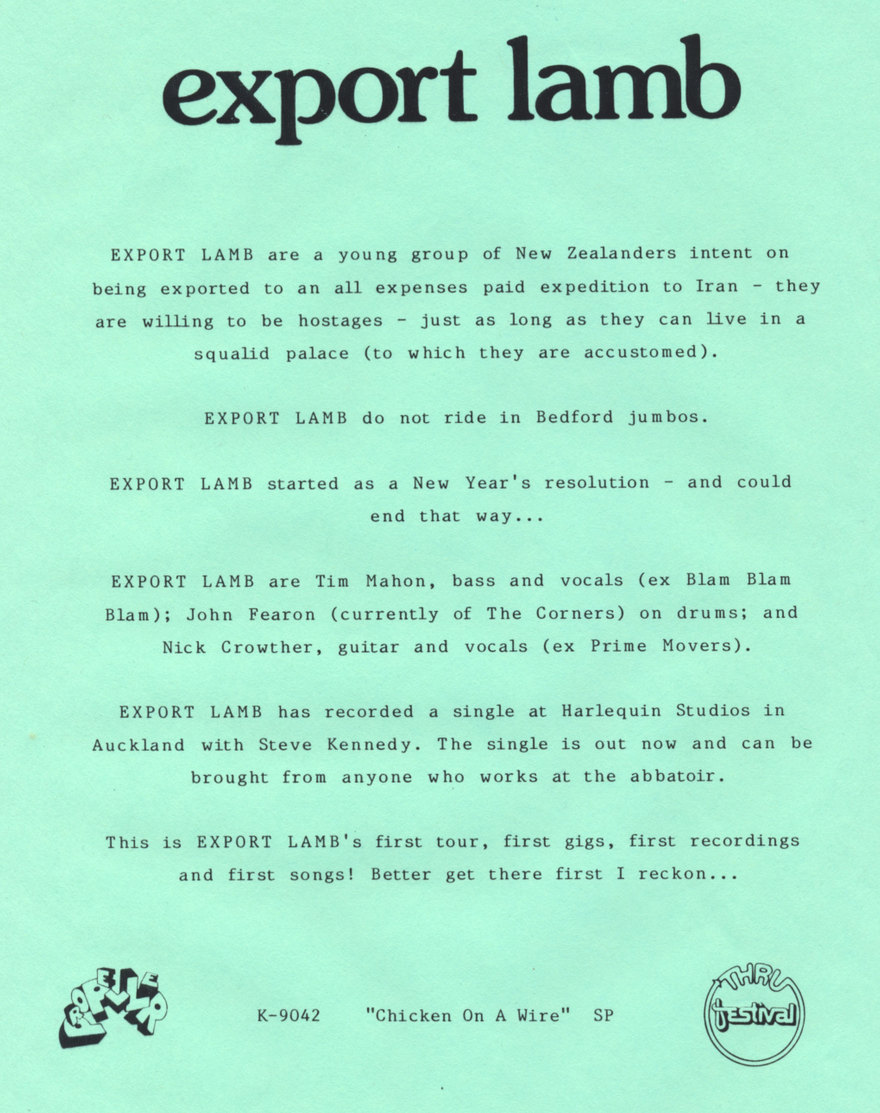
1983 press release for the only single from Export Lamb, a band featuring former members of Blam Blam Blam and The Prime Movers. - Simon Grigg collection
An eponymous single by Jam This Record (actually Body Electric’s Alan Jansson, The Features’ James Pinker, Car Crash Set’s David Bulog and Grigg himself) sold poorly in New Zealand but found club success in the UK, where over 1,000 were sold in 1988.
Grigg had more domestic luck with his well constructed and annotated label and era retrospectives It’s Bigger Than The Both Of Us (1988), The Screaming Meemees’ Stars In My Eyes (1992), The Complete Blam Blam Blam (1992) and the expanded reissue of AK79 (1993 on CD, and 2019 on double vinyl), which added vital singles and album tracks to the landmark punk collection.
With much of the Propeller Records catalogue now available online, New Zealand’s most important indie label of the early 1980s lives on, a constant reminder of those vital early years in New Zealand’s musical resurgence when respect for difference and innovation set new standards and offered new paths.
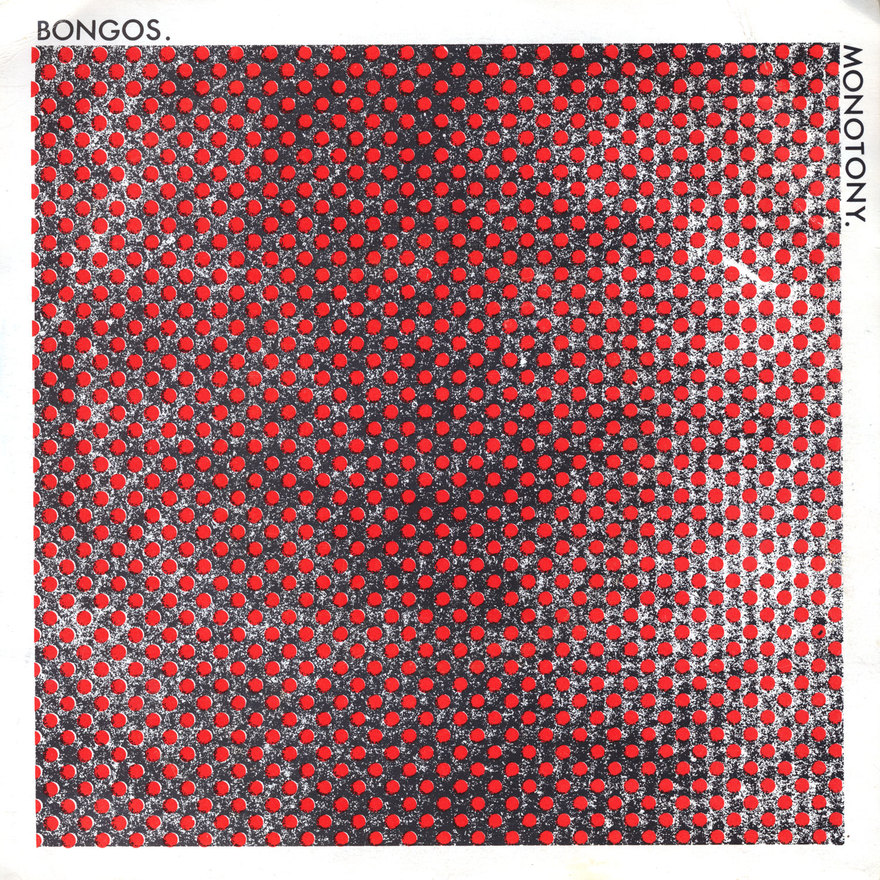
The Bongos double A-side single Falling / Monotony, released in November 1982. The Bongos grew out of the earlier Rhythm Method who appeared on the 1981 Class Of 81 album.